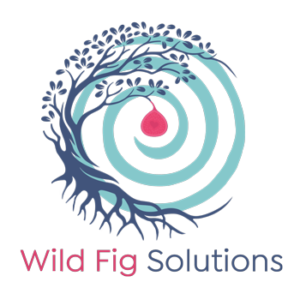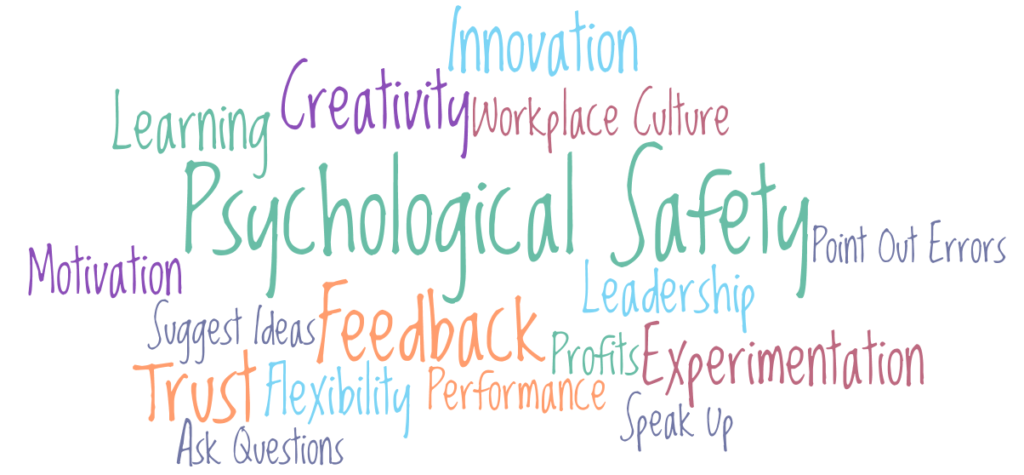Psychological safety was researched for many years before it hit the headlines with Google’s Project Aristotle. In asking “what makes an effective team?” the key enabling factor was psychological safety. But we have a choice — we can create psychologically safe environments with or without effort. What do you choose?
Definition : Psychological safety is “a belief that one will not be punished or humiliated for speaking up with ideas, questions, concerns or mistakes.”
I’m sure you’ll have been in a conversation or a meeting at some point in your life where you wondered whether to speak up, whether to ask the question, whether to offer the idea you had, whether to say I don’t know, or whether to say it didn’t work.
Those were the conscious times you protected your ‘self’, there will be many more when you were in protection mode with no conscious awareness that that was happening. Where speaking up never consciously crossed your mind.
We develop such a finely honed skill as we grow up to protect our “self” — our identity, our reputation, our personality, our status, our pain levels (physical and emotional), our job, our income. All with the intent to create a controlled and certain experience of life, where it is believed safety is achieved.
And this learnt self-protection isn’t purely about lacking confidence because, although for some the story is — my view’s not important enough — this experience also impacts those who are apparently confident and successful — if I say this I’ll risk my reputation or status or income.
How does this impact work?
In her research, Amy Edmondson discovered that, compared to 20 years ago, people spend 50% more time collaborating. The work being done has changed and therefore how it needs to be done has changed too. I wonder to what extent this is all inevitably interconnected to our current experience of a VUCA world, and the continued increasing entropy of the universe — naturally and increasingly moving from order to disorder while we scrabble around trying to maintain order and control.
If we need increased collaboration, we need increased honesty and this needs reduced fear i.e. increased psychological safety.
How many organisations have you seen with “honesty” as one of their core values? Desperately trying to get people to speak up more, to engage in open, constructive debate and challenge.
We know that honesty is powerful and acts like oil to ease the wheels of communication and collaboration, and yet there is so little honesty at work.
“when people stay silent when they should have spoken up, not only does that not feel good to them it can also create harm and risk for others, and for the organisation” Amy Edmondson
What goes on in our minds?
In that moment, when a conscious or subconscious choice is made about whether to speak, the equation rapidly done is one of gains. And the self — without inquiry — will win. Amy talks about it as an asymmetry:
If I say this, who gains? We do — org, customer, colleagues. How confident am I that this gain will occur — don’t know, hard to say, maybe 50:50. And when will the gain occur? — it might happen but it could be a long way off and there might be other factors at play.
If I don’t say this, who gains? I do. How confident can I be in this gain? — 100%, I’ve stayed safe for another second. And when will the gain occur? — immediately.
From this level of thinking, believing we are the self mentioned above, and nothing else, not speaking is the most obvious thing to do.
It becomes a no-brainer when we believe we need to stay in a safe, controlled and certain environment, as we’ve been taught to be true as we’ve grown up.
And yet, this self or ego is a mere activity of thought which has become over-zealous in its habit of attachment. An activity of thought which is so loud in our heads that we’ve listened to it and believed it to be us, to be true, and to be important.
In believing this ego is us, and in the experience of a VUCA world (the features of which this thought activity hates!) it makes sense to create psychologically safe environments to feel OK.
Psychologically safe environment = no threat = calm ego thought-activity = greater clarity and an obviousness to speak up.
But are we fighting a losing battle? Are we looking in the wrong place to create these environments? Are we putting in way more effort with activities “out there” than is necessary?
As a leader wanting to create a psychologically safe environment, there are two core ways you can go about it.
Option 1 — the normal way — “do it”
This normal way soothes and appeases the ego. It settles it down by manufacturing an environment in which it feels safe. Using practices and habits that mean it knows where it stands, it knows the rules of the game, it can settle because there appears to be a level of familiarity, stability and certainty.
This could be agreeing norms for meetings such as the order in which things happen each time, the removal of devices, the clarifying of roles e.g. chair, time keeper, scribe, …, the use of language to signal positivity where there could have been threat e.g. “failure parties” as Amy talks about in this podcast with Garry Turner.
The work of Nancy Kline and her Thinking Environment is a great example where the 10 components uncovered in her research, and which make up a Thinking Environment, influence how safe an ego feels. The repeatable habits and phrases from this work enable us to bring these components to life and create a psychologically safe environment for others to do their best thinking.
But within anything we “do” to create psychological safety, a key element is listening. This makes sense given that listening is a core way to build trust, as shown by The Trust Equation where low Self Orientation is critical to greater trust — i.e. awareness is on the other person, not on what’s going on in your own head.
So this is ‘real’ listening, being truly present with someone. Not hearing the words and nodding while thinking of your own view or question or idea.
When we’re “doing” psychological safety as a task or activity to be applied, even real listening is a challenge and takes cognitive effort because the ego continues to dance noisely around inside our heads and so, with no insight of what else to do, we use our psychological muscle power to try and stop it.
Which brings us onto…
Option 2 — the natural way — “be it”
When everything drops away we connect with others.
When everything drops away we listen, really listen.
When everything drops away we act from clarity with the best interests of the whole at heart.
The natural way is here when “things” are absent and the critical “thing” in the way is the ego.
But remember that the ego is not really a “thing”. It is an activity of thought which we have attached to, believing it is who we are. It is no more solid than the air you breathe.
Think of a time when you were with someone, feeling frustrated by their under performance, associating that with an impact on business performance = impact on my reputation = impact on my financial safety. Then they told you of a significant personal challenge that was stopping them at work. Immediately thoughts of your ‘self’ dropped away, you connected with them, you listened to their situation, you understood, and from a place of compassion you collaboratively agreed a way forward that met individual and organisational needs. If this ego were a solid object how could it disappear in an instant like that?
In that moment of ego dropping away, psychological safety was an inevitability. It can’t help but be there.
Our innate nature, the absence of ego, is compassion, connection, clarity and creativity. Our innate nature is to listen with presence and attention for the other. Like the screen on which the movie plays, this innate nature can’t help but be seen when the movie of ego stops.
And from here, psychological safety becomes effortless. No “doing” is needed. You are “being” it — because you are it.
No rituals, habits or practices need to be enforced, they happen, inevitably, and sometimes they might not. Either way, from here it doesn’t matter because they are known not to be the real “thing” that created the safe environment in the first place. What they’ve been doing all along is enabling the ego to drop — and it is that which creates psychological safety. Always.
Unlike the “normal” way (which looks outward to the type of room layout, the language patterns, the order things happen) the “natural” way looks inward. It looks to you, to who you really are. For the ego, this can feel scary and threatening and is seen to involve vulnerability and courage. Those feelings are all just because it still currently believes it (this activity of thought) needs to be protected, but this is only because it’s never known another way and never looked to see what’s really going on.
The more we look, the more the ego naturally goes quiet and the more we put our intellect to more effective use, introducing room layouts, or language patterns or orders for things to happen effortlessly because they seem like an obvious and useful thing to do.
So the “normal” way is not wrong, there are great ideas within it. But we’re so busy “doing” and applying these things in line with a script that we miss the point.
Press pause on that, explore the “natural”, “be” who you really are from which psychological safety is naturally here. Now the ideas and activities from the “normal” way, the ones that could be useful for this specific situation right now, are applied in service of that. Easily. Inevitably. Naturally.
With love, Helen
If you want to be notified when I post something new, follow me on Medium.

